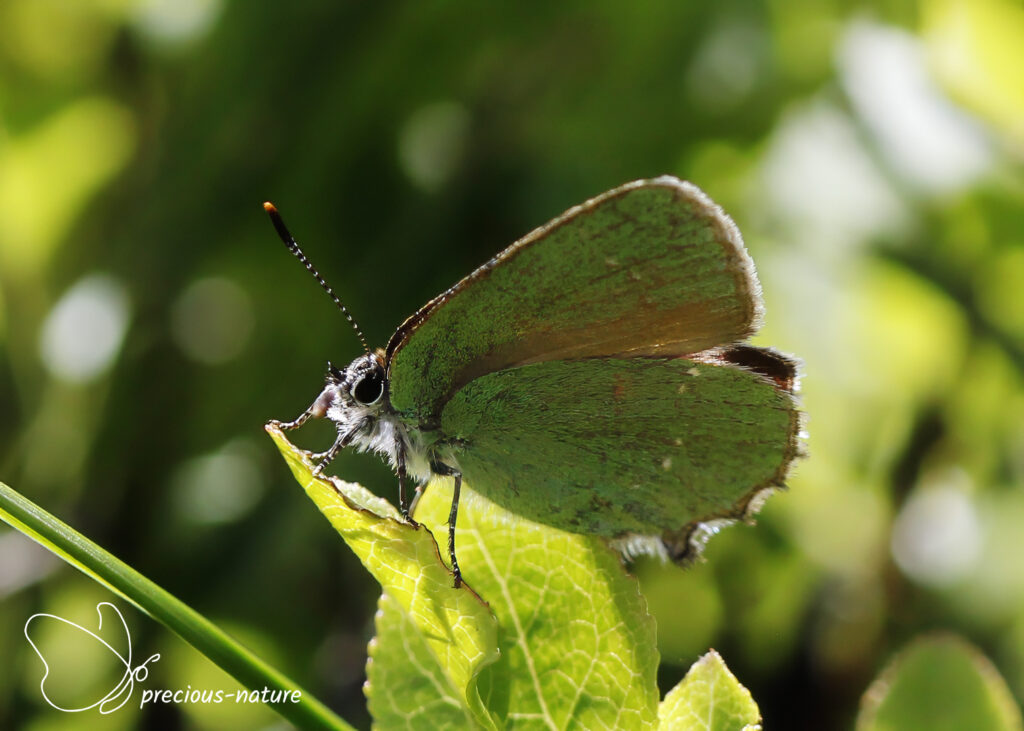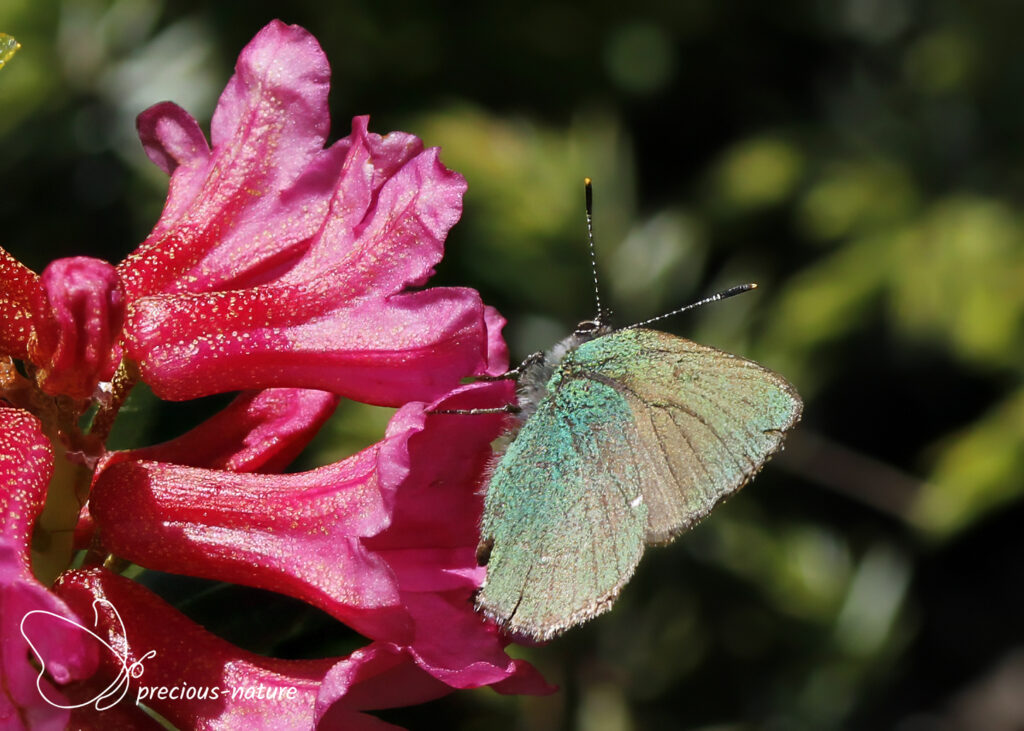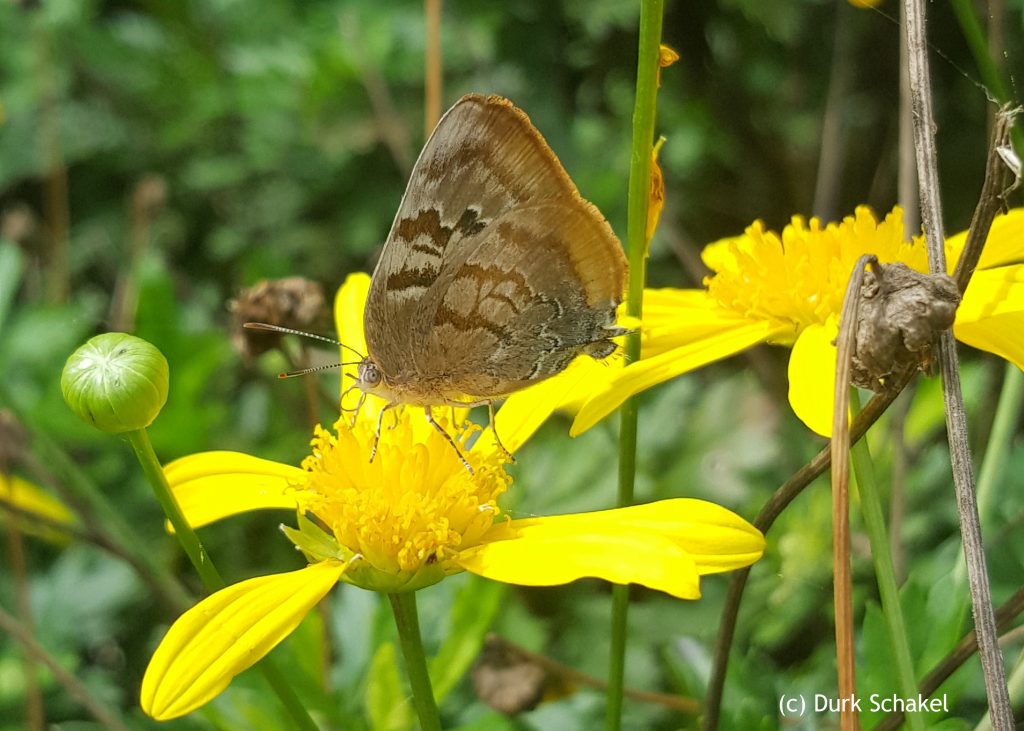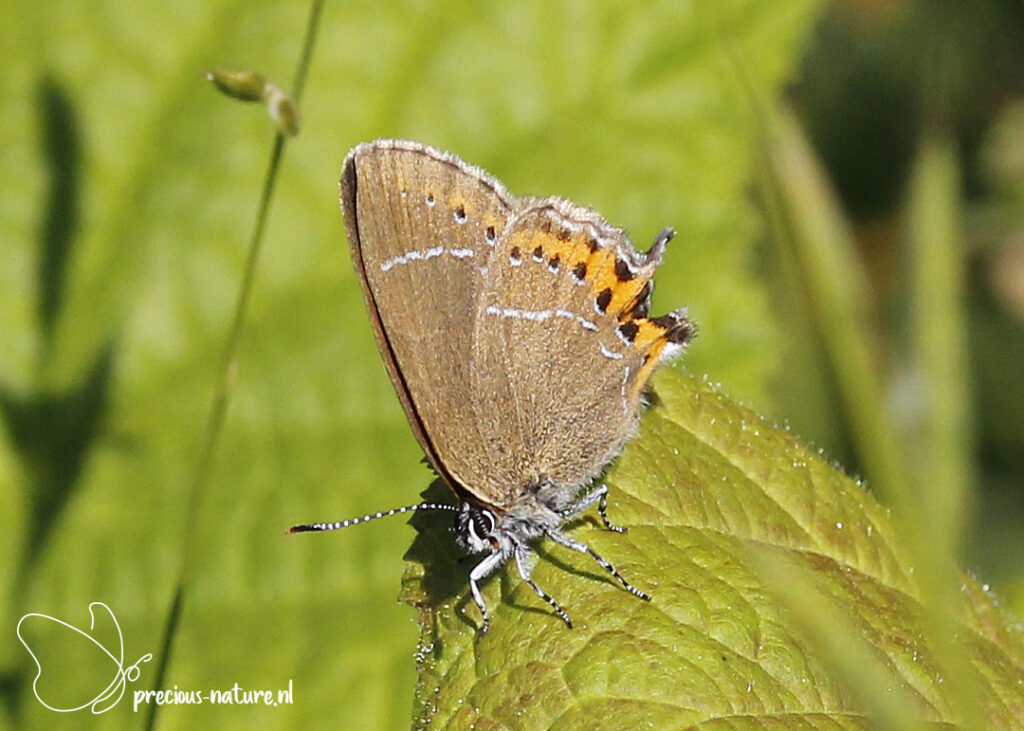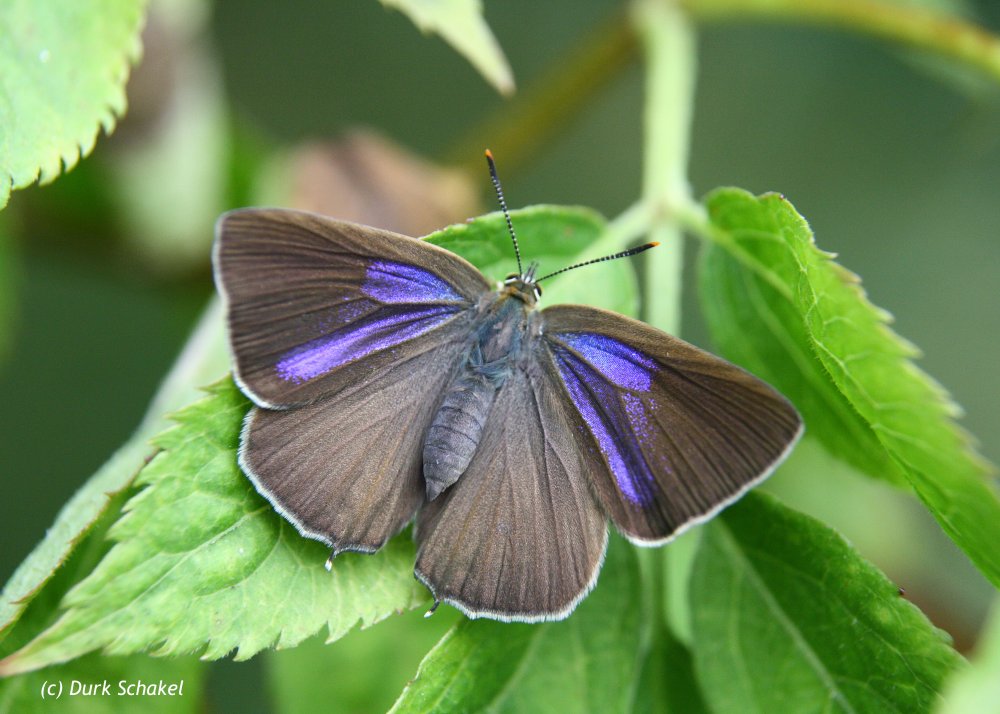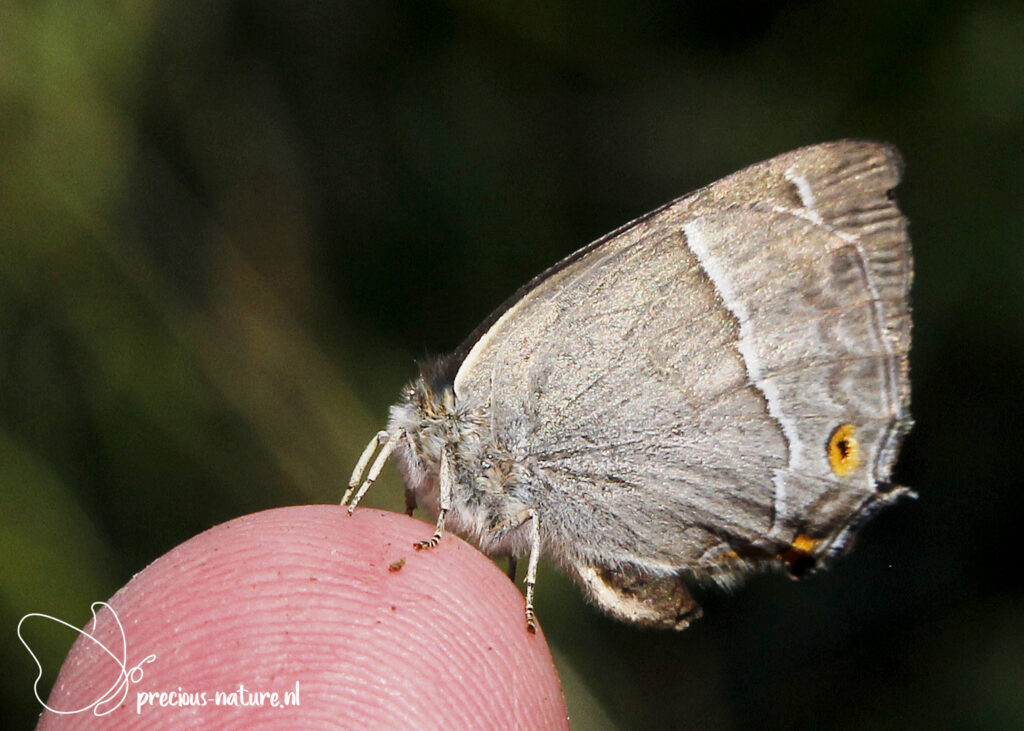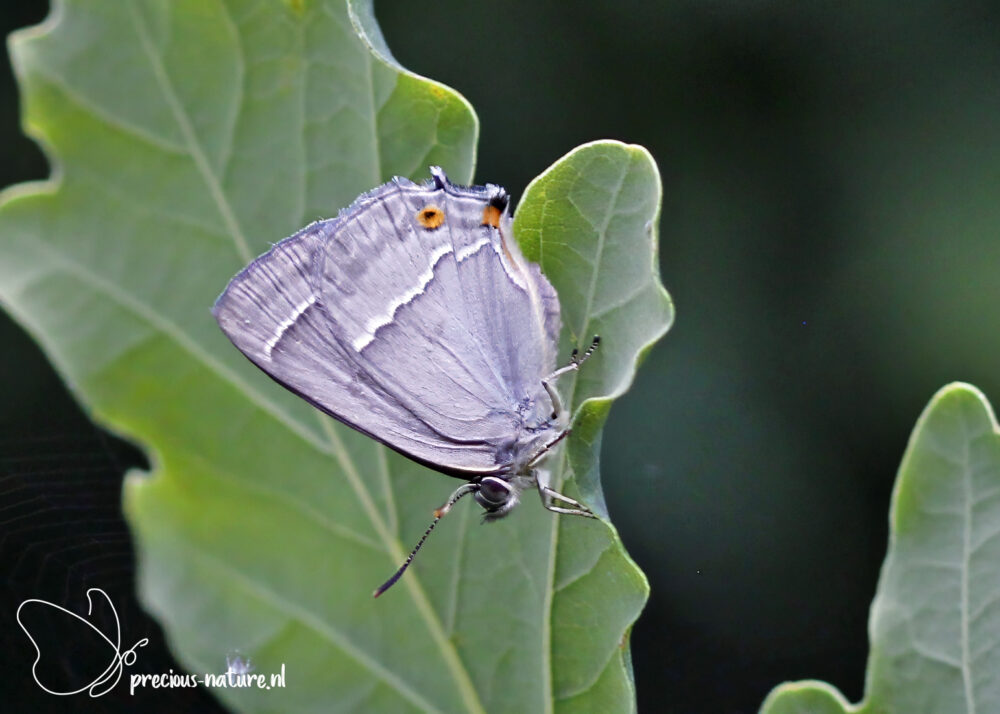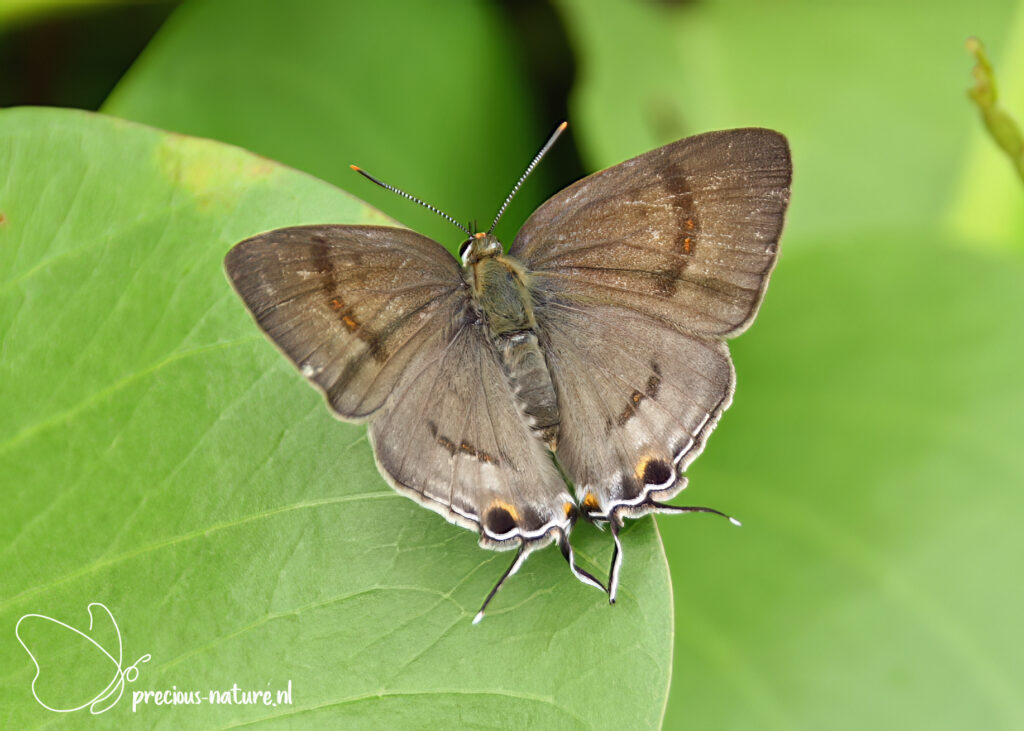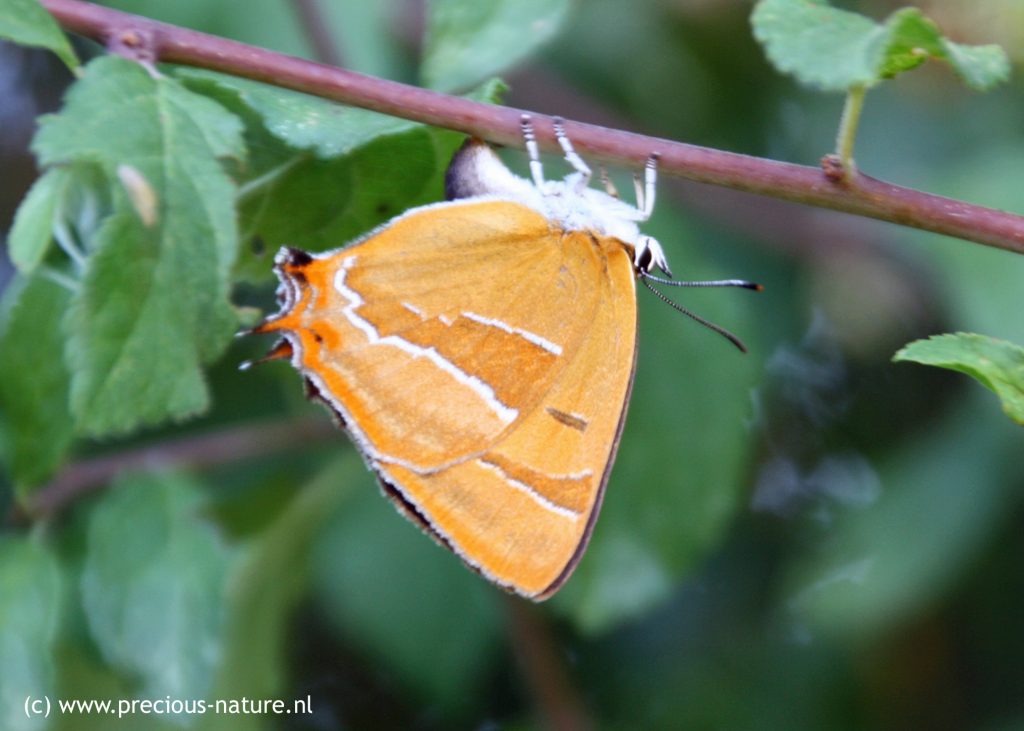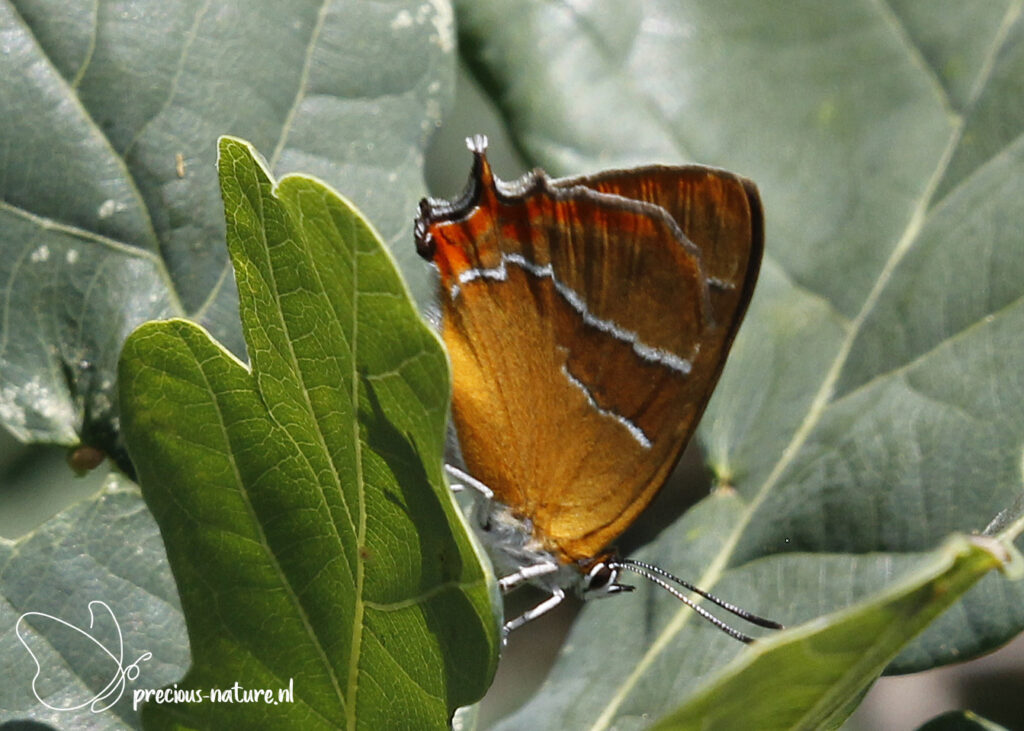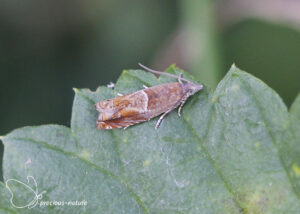Hairstreaks (Theclinae), a subfamily of the Gossamer-wing butterflies (Lycaenidae), often have a small tail at the inner edge corner of the rear wing. The most important features for determination are on the underside of the wings, especially the hindwing. On the underside is a characteristic, fine and white marking, a hairstreak. Furthermore, they are sometimes difficult to find because they often reside high up in bushes or trees.
Tribe: Eumaeini
Genus: Callophrys
Green Hairstreak – 2008 (NL)
(NCBI-index: 242269)
The Green Hairstreak (Callophrys rubi) is a butterfly that flies in one generation from late April to mid-July. The wings are closed, except in flight, showing only the green underside with its faint white streak. The extent of this white marking is very variable. It is frequently reduced to a few white dots and may be almost absent. The top is dark brown, and the eyes are rimmed white. The wingspan is 27-34 mm. Host plant: Common Rock-rose, Bird’s-foot, Corse, Broom, Dyer’s Greenweed. Dutch name: Groentje. Frisian name: Grienjurkje.
Flying period:

Tribe: Eumaeini
Genus: Rekoa
Gold-bordered Hairstreak – 2017 (CO)
(NCBI-index: 709190)
The Gold-bordered Hairstreak (Rekoa palegon) is a hairstreak that occurs in the North of South America. I spotted this butterfly in Medellín (Colombia). The underside of the wing is grey with a pattern of orange-brown irregular lines and an orange-brown termen. The top is brownish with a blue sheen at the base of the wings. In males, the blue colour is more present. This hairstreak owes its name to that orange-yellow termen. Host plant: Aster. Dutch name: Goudgerande page. Frisian name: –
Tribe: Eumaeini
Genus: Satyrium
Black Hairstreak – 2023 (DE)
(NCBI-index: 876075)
In the Netherlands, the Black Hairstreak (Satyrium pruni) has been absent as a common butterfly since 1971. The few sightings there are mainly from the east and south of the country. The closest populations are in the Ardennes and the Eifel, where I have seen this butterfly. The ground colour of the upper side of the wings is dark brown. The slightly larger female is lighter in colour and has an orange streak on the upper side of the forewing, which the male lacks. Along the trailing edge of the underside of the hindwing is a bright orange band edged with conspicuous black spots on the inner surface. The black spots are outlined in white on the inside. The orange spots do not have a clear crescent shape. A little further in, a white broken line is visible. The hindwing has a small tail, and at the tip of the tail, there are one or two blue spots. The flight period spans one generation, from early June to mid-August, and the wingspan ranges from 34 to 40 mm. Host plant: Blackthorn, Plum tree. Dutch name: Pruimenpage. Frisian name: –
Flying period:

Tribe: Theclini
Genus: Hypaurotis
Purple Hairstreak – 2017 (NL)
(NCBI-index: 116135)
The Purple Hairstreak (Favonius quercus) is a butterfly that flies in one generation from the beginning of July to the end of August. Distribution is widespread in areas where oak trees are found. It is frequently overlooked as adults remain largely in the canopy, where the main food source is honeydew. The butterfly is fairly easy to identify, with the blue-purple shine on the fore- and hindwings of the male being particularly noticeable. The female shows only a blue-purple spot on the forewing. The underside of the wing is blue-grey with a double crossband, white-black, close to the marginal area. The hindwing has a small tail and two orange stains, one with a black dot in it. The wingspan is 37-39 mm. Host plant: Sessile Oak, Pedunculate Oak. Dutch name: Eikenpage. Frisian name: Ikepaazje.
Flying period:

Tribe: Theclini
Genus: Hypolycaeana
Common Tit – 2022 (INA)
(NCBI-index: 544316)
There is no official Dutch name, but I derived it from the host plant of this hairstreak. The upper side of the male of the Common Tit (Hypolycaeana erylus) is dark brown but reflects a deep metallic purple sheen under certain lighting conditions. It has a narrow black border, and on the forewings, there is a large black patch of scent scales. The female lacks the purple sheen and features a series of off-white markings, as well as a row of rust-brown spots. The tails are present in both sexes. This species is found in many natural environments, including coastal mangrove forests, lowland rainforests, and temperate hill forests, at elevations between sea level and about 4,000 feet. Males can often be found sucking mineralized moisture from sand, rocks, road surfaces, or the walls of buildings in wooded areas. Both sexes feed on nectar from various wild and cultivated flowers. The adults always hold their wings upright while feeding. They periodically vibrate their hindwings, causing the tiny ‘false antennae’ tails to wiggle. This, combined with the ‘false eye’ marking on the edge of the wings, gives it the appearance of a back-to-back butterfly and distracts predators from the butterfly’s head and body. Birds generally try to predict which direction a butterfly will take, so they aim their attack at a point just in front of the butterfly. The wingspan is 27-32 mm. Host plant: Cinnamon tree. Dutch name: Kaneelboompage. Frisian name: –
Tribe: Theclini
Genus: Thecla
Brown Hairstreak – 2018 (FR)
(NCBI-index: 596664)
The Brown Hairstreak (Thecla betula), like the Purple Hairstreak (Hypaurotis quercus), is often found on the tops of trees. This hairstreak is hardly seen in the North of the Netherlands. During my holidays in France, in the Vendée, I came across this beautiful orange butterfly for the first time. The top of the wing is dark brown. The female has a large, prominent kidney-shaped orange spot on the forewing. The underside of the wing is light brown to orange with an orange band across the hindwing along the termen. Striking are the two white cross lines on the underside of the hindwing, the innermost of which runs from the costa to the middle of the wing. Between those white thin lines is a dark orange band. On the hindwing, there is a rather large, striking tail. The wingspan is 38-40 mm, and the flying period is in one generation from July to October. Host plant: Blackthorn. Dutch name: Sleedoornpage. Frisian name: Krikelbeampaazje.
Flying period:


